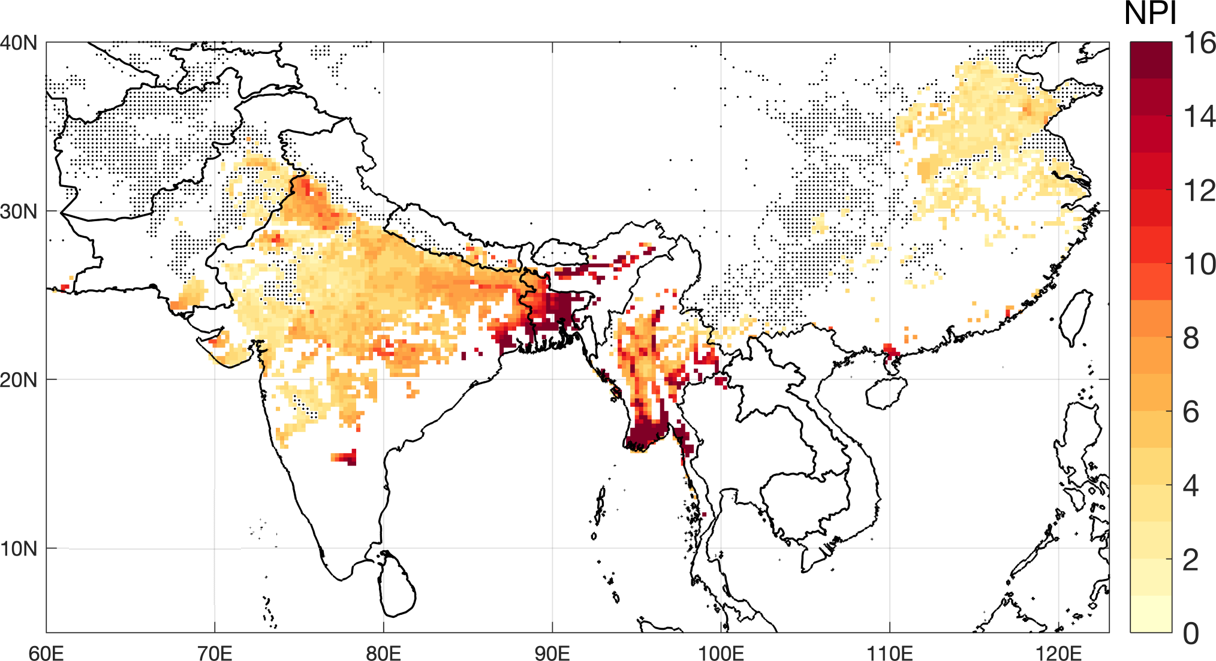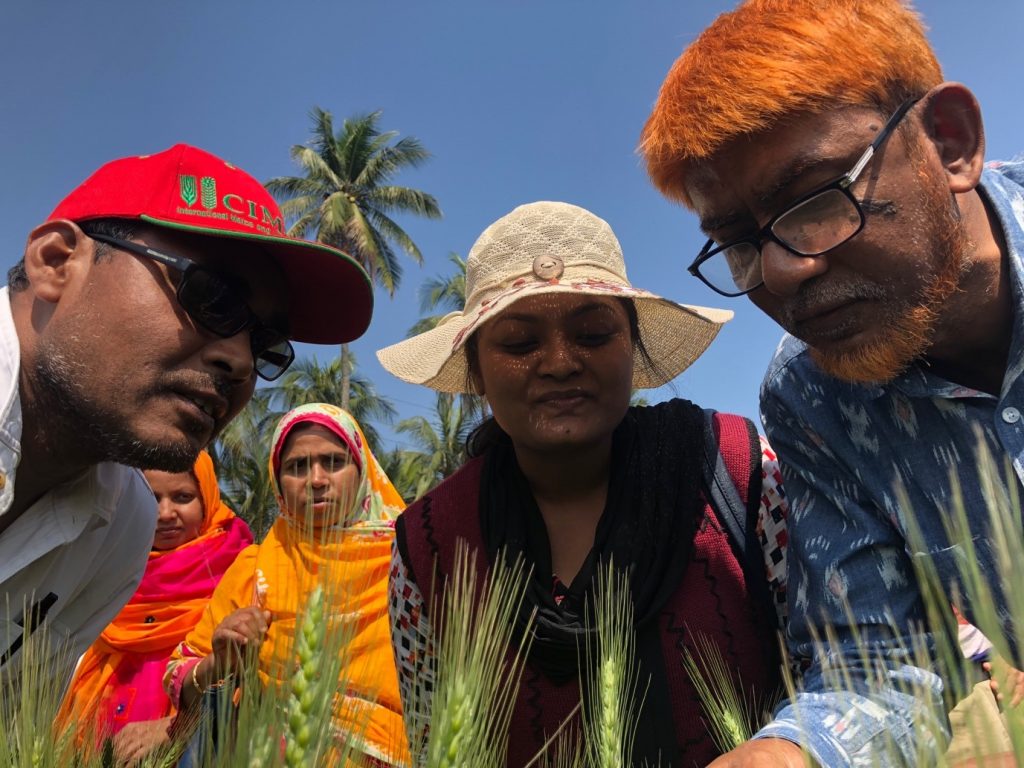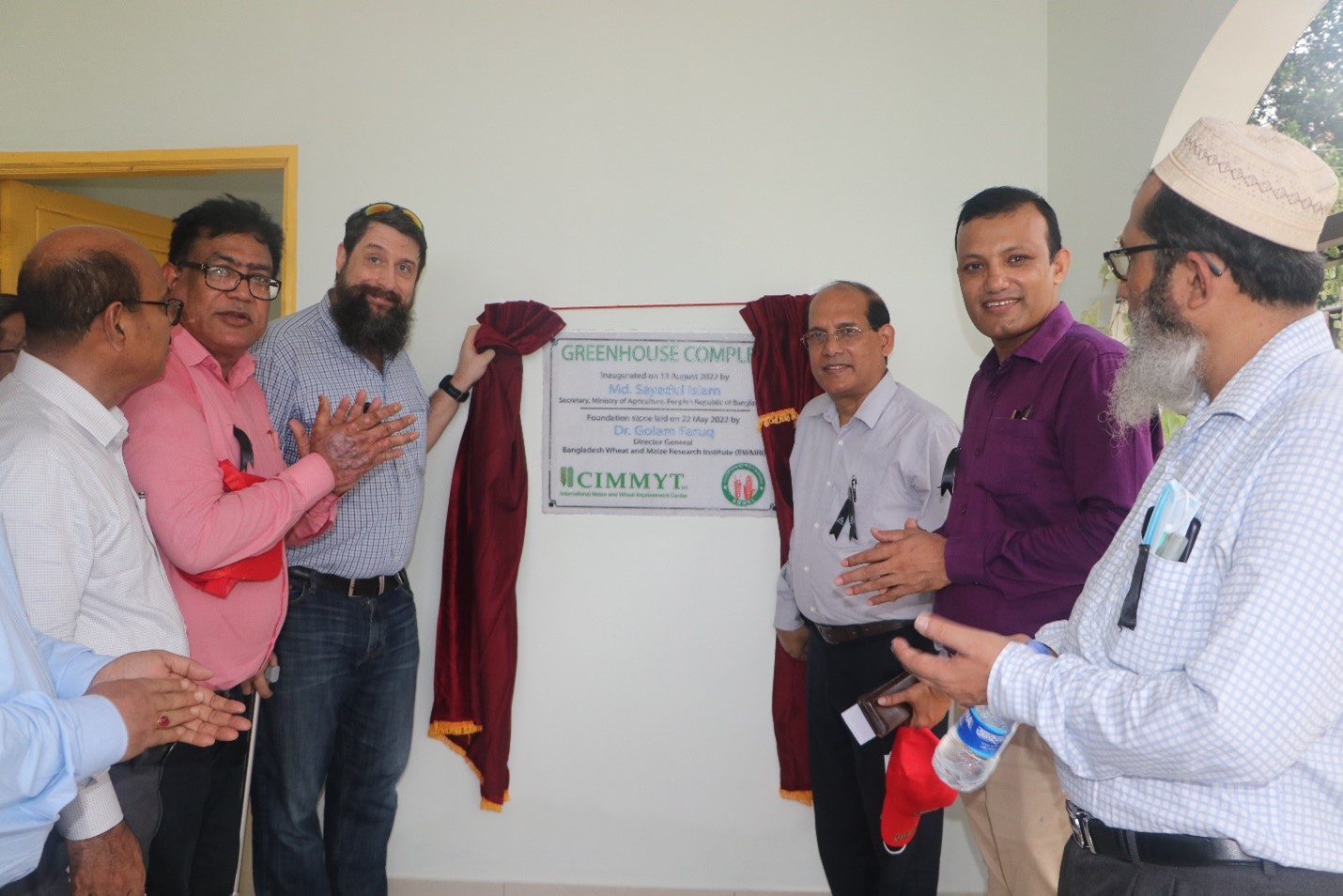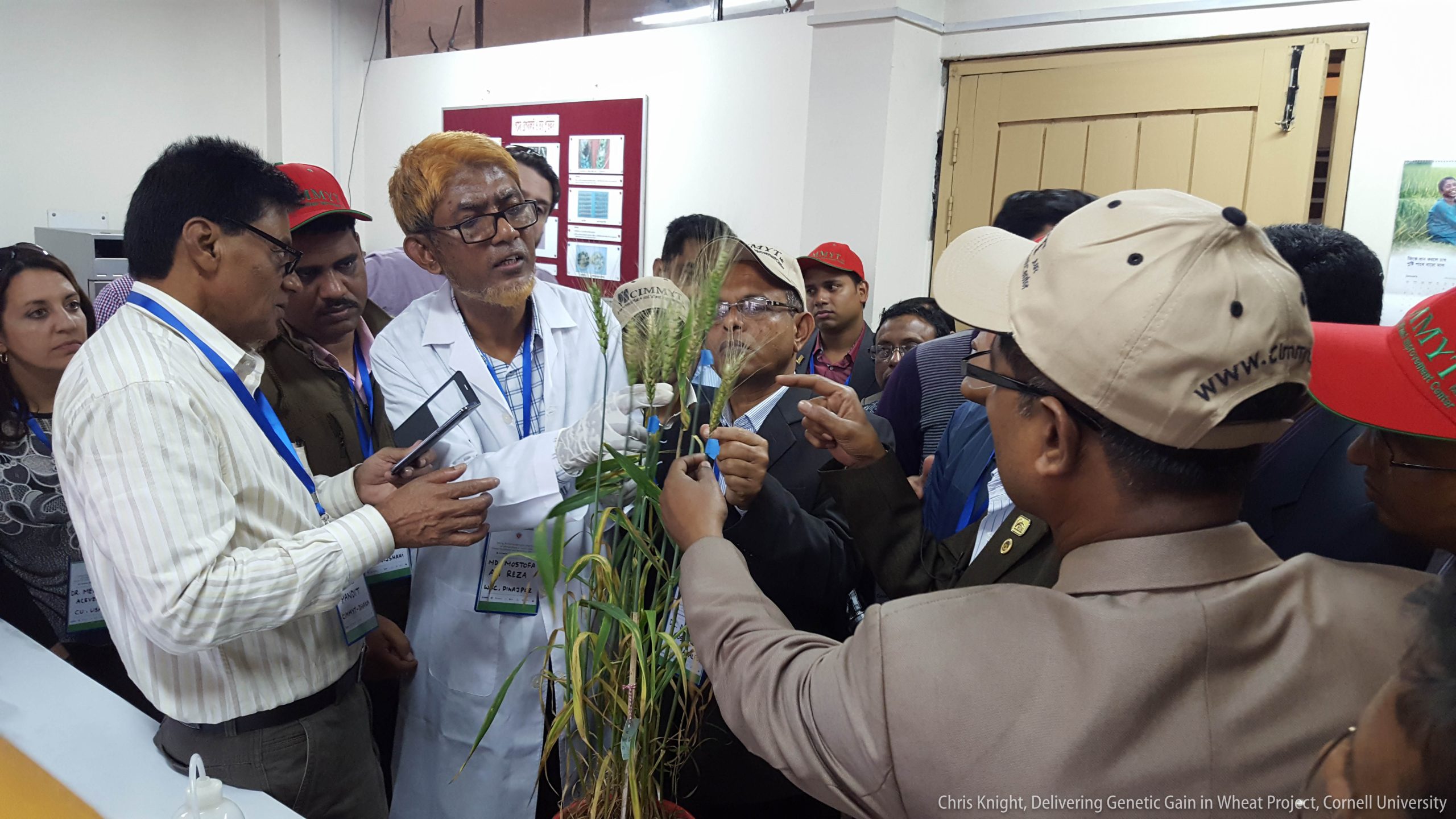Cutting-edge models for crops and crop diseases, boosted by high-resolution climate datasets, could propel the development of early warning systems for wheat blast in Asia, helping to safeguard farmers’ grain supplies and livelihoods from this deadly and mysterious crop disease, according to a recent study by scientists at the International Maize and Wheat Improvement Center (CIMMYT).
Originally from the Americas, wheat blast shocked farmers and experts in 2016 by striking 15,000 hectares of Bangladesh wheat fields, laying waste to a third of the crops. The complex interactions of wheat and the fungus, Magnaporthe oryzae pathotype Triticum (MoT), which causes blast, are not fully understood. Few current wheat varieties carry genetic resistance to it and fungicides only partly control it. Warm temperatures and high humidity favor MoT spore production and spores can fly far on winds and high-altitude currents.

“Using a wheat blast infection model with data for Asia air temperatures and humidity during 1980-2019, we found high potential for blast on wheat crops in Bangladesh, Myanmar, and areas of India, whereas the cooler and drier weather in countries such as Afghanistan and Pakistan appear to render their wheat crops as unlikely for MoT establishment,” said Carlo Montes, a CIMMYT agricultural climatologist and first author of the paper, published in the International Journal of Biometeorology. “Our findings and approach are directly relevant for work to strengthen monitoring and forecasting tools for wheat blast and other crop diseases, as well as building farmers’ and agronomists’ disease control capacity.”
Montes emphasized the urgency of those efforts, noting that some 13 million hectares in South Asia are sown to wheat in rotation with rice and nearly all the region’s wheat varieties are susceptible to wheat blast.
Read the full study: Variable climate suitability for wheat blast (Magnaporthe oryzae pathotype Triticum) in Asia: Results from a continental‑scale modeling approach
Cover photo: Researchers take part in a wheat blast screening and surveillance course in Bangladesh. (Photo: CIMMYT/Tim Krupnik)


 Capacity development
Capacity development 